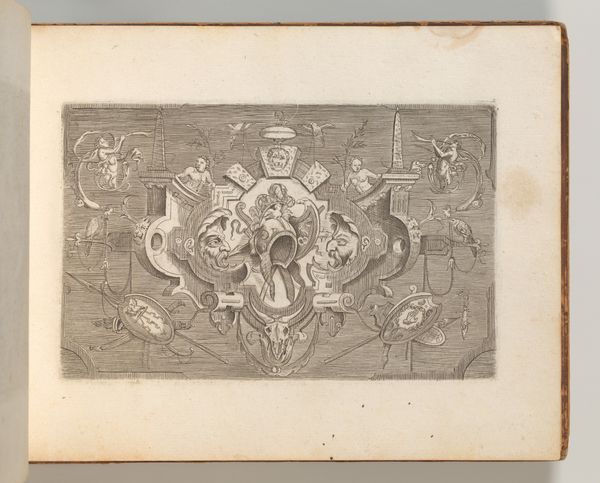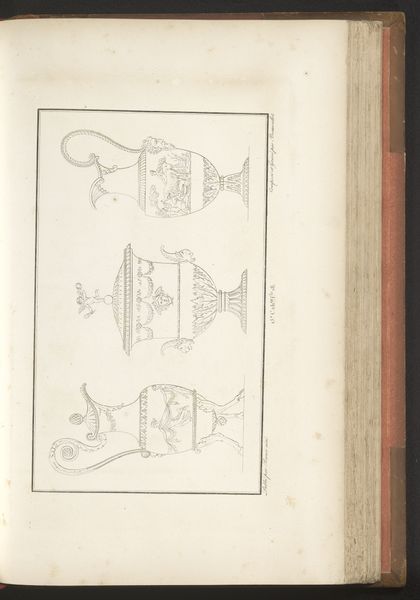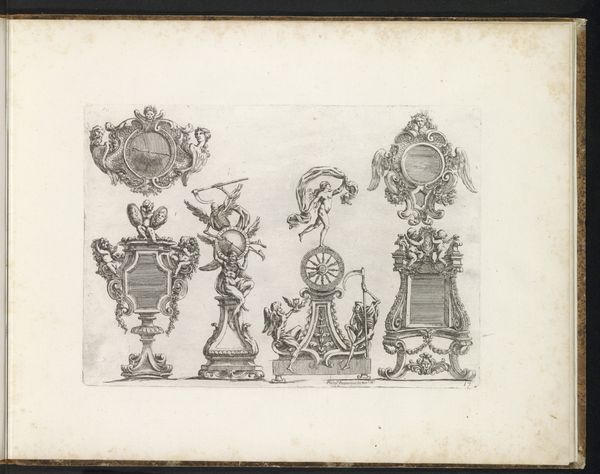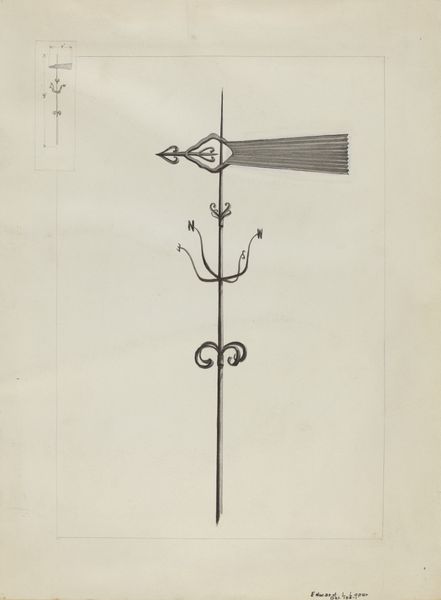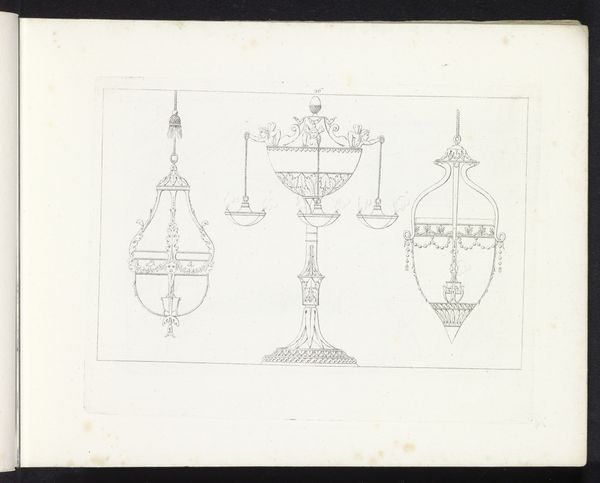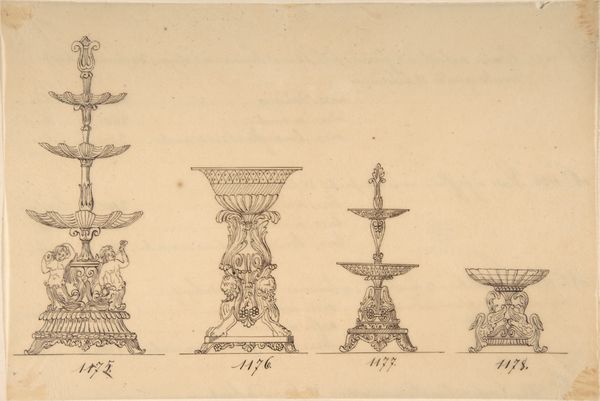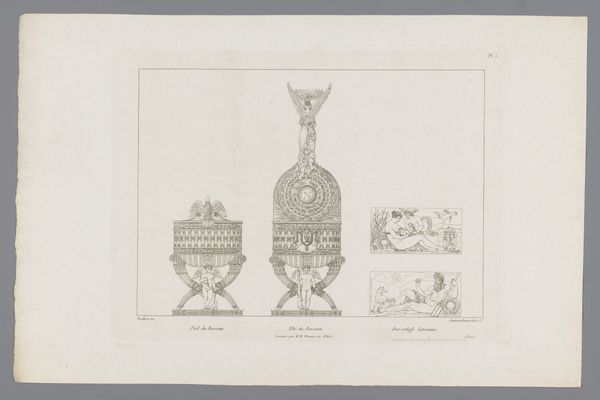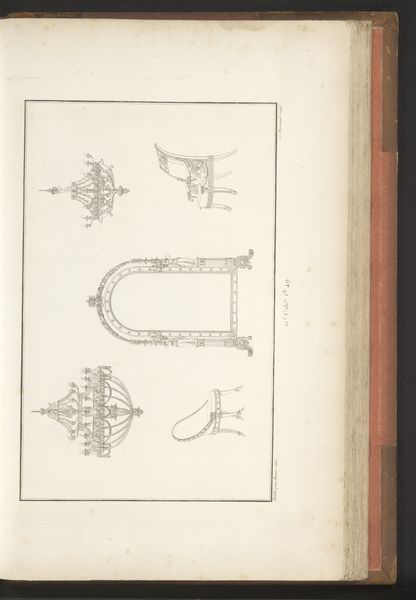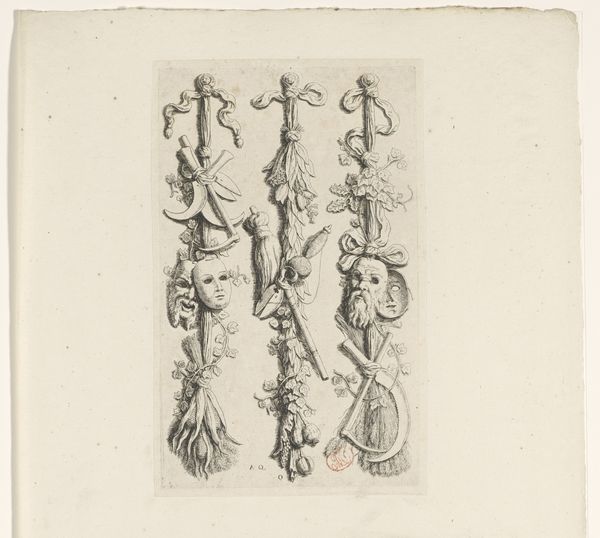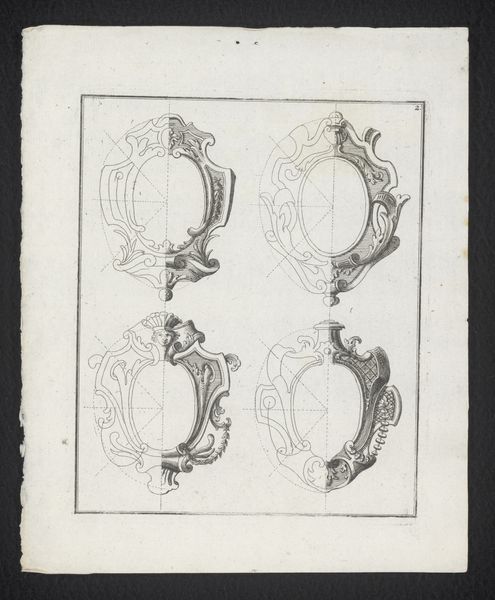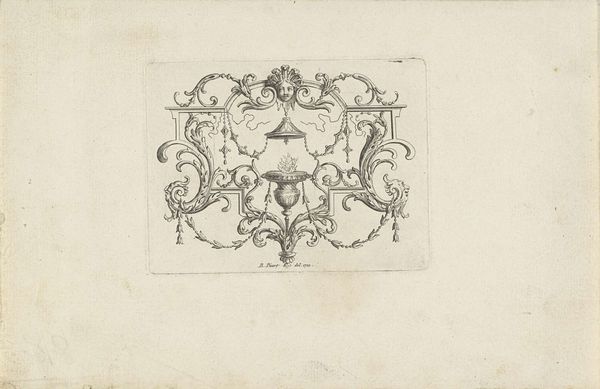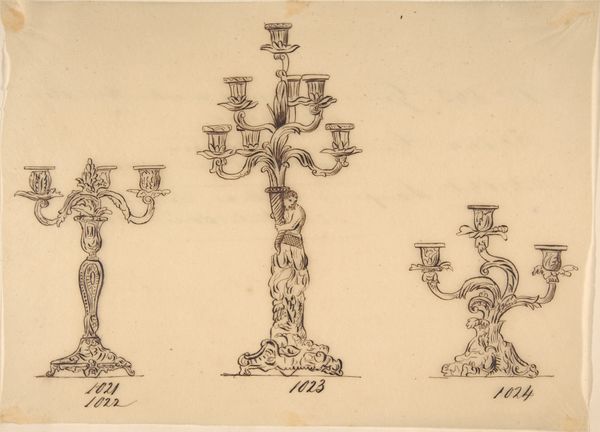
drawing, print, paper, engraving
#
drawing
#
ink paper printed
# print
#
paper
#
form
#
geometric
#
line
#
northern-renaissance
#
engraving
Dimensions: height 260 mm, width 178 mm
Copyright: Rijks Museum: Open Domain
Editor: So, we’re looking at "Two Polyhedra with a Tetrahedron as a Starting Point" by Jost Amman, dating back to 1568. It’s a print, an engraving to be exact. These geometric forms are intriguing, like elaborate, mathematical ornaments. What catches your eye about this piece? Curator: What stands out to me is how this engraving speaks to the 16th century's fascination with knowledge and its display. Prints like this weren't just decorative; they were tools. They served as demonstrations of mathematical and geometric principles, essential knowledge for architects, artists, and even military engineers of the era. Jost Amman, although mainly a printmaker, was very involved with the scientific milieu. Notice how the tetrahedrons are displayed on what appear to be pedestals - like trophies almost. How do you think prints like this were circulated at the time, and what impact could they have had? Editor: I hadn't thought about it that way. So, it's not just about the beauty of the forms, but about spreading this geometric knowledge through printed media? Were they expensive, making knowledge only available for the elite? Curator: Exactly! The printing press democratized images to a degree, but access still largely depended on one's socio-economic standing. And beyond mere reproduction, the act of engraving, the precision demanded, imbued the images with an aura of authority and accuracy. It played a huge role in visually defining, circulating, and standardizing knowledge about geometry in the 16th century. These weren't simply shapes, but rather symbols of understanding. Editor: That's a fascinating perspective. Seeing this piece in terms of the history of knowledge dissemination makes it far more interesting than just an illustration of polyhedra! Thank you! Curator: Indeed, the public role of images should always be kept in mind! Looking closely is an act of interpretation, enriched by the circumstances of production and distribution.
Comments
No comments
Be the first to comment and join the conversation on the ultimate creative platform.
